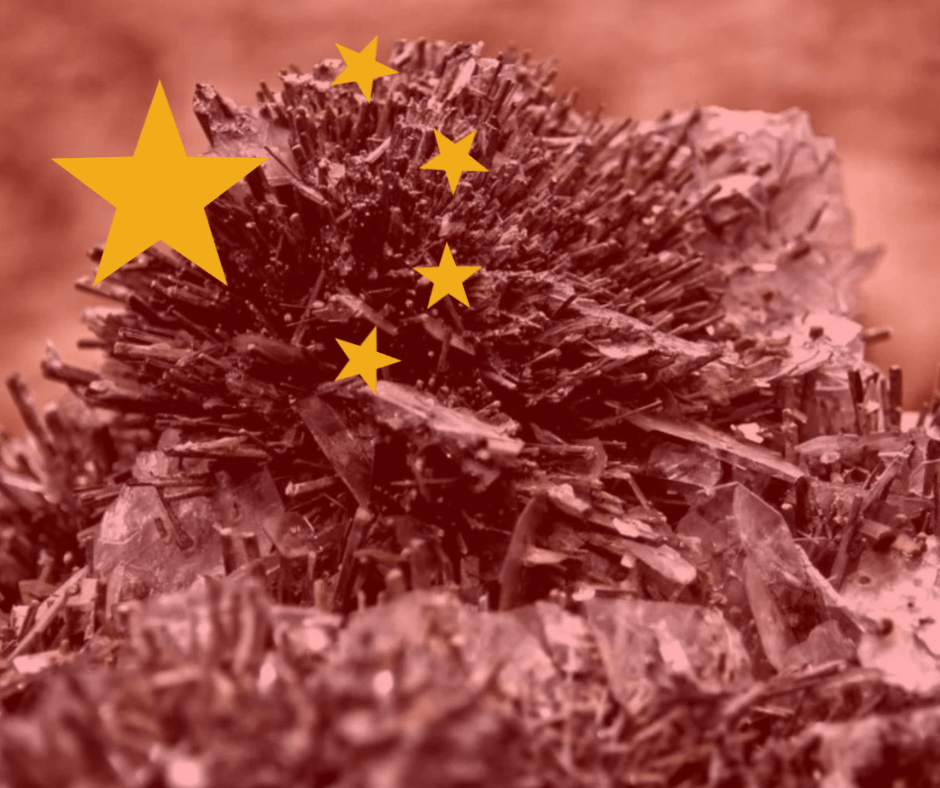Beijing’s mineral weapon hits Western ammunition production as antimony costs surge from $13,000 to $38,000 per ton
China has weaponized its control over critical defence minerals, blocking shipments and sending prices into orbit. Antimony prices jumped 192% from $13,000 to $38,000 per tonne in 2024, creating acute shortages for Western ammunition manufacturers.
The escalation reached a breaking point in April when Chinese customs detained a 55-ton antimony shipment at Ningbo port for three months. The cargo, bound from Australia to Mexico, was eventually released with one condition: it had to return to Australia, not reach any potential U.S. buyers.
The December Hammer Blow
Beijing dropped the hammer in December 2024, banning all exports of antimony, gallium, germanium, and superhard materials to the United States. The move came 24 hours after Washington expanded tech restrictions on China, marking the most aggressive use of mineral exports as economic warfare.
Antimony, a little-known but crucial metal for chipmakers and the defence industry, is now in short supply after Beijing moved to restrict exports. The timing was surgical as Western nations ramp up defence production amid global tensions.
Pentagon Scrambles for Domestic Supply
The U.S. military’s dependence on Chinese antimony became stark when Defence Department officials realized they had no domestic production. During WWII and the Korean War, the U.S. Government commissioned antimony and tungsten production from Stibnite under the authority of the Strategic Metals Act of 1939, but those mines closed decades ago.
Now the Pentagon is betting big on reopening them. Perpetua Resources received approval for a $1.8 billion loan to develop the Stibnite Gold Project in Idaho, which would be one of Washington’s largest investments ever in a domestic mine. The Stibnite project maintains one of the largest antimony reserves not subject to Chinese influence.
But there’s a problem: The decision comes after eight years of rigorous inter-agency federal permitting. Even with fast-track approval, the mine won’t produce antimony until 2027 at earliest.
Ammunition Plants Hit First
Defense contractors are already feeling the squeeze. Antimony hardens bullets and shells, making it essential for ammunition production. As Western countries ramp up the production of military equipment, the shortage of antimony a critical mineral which has become an increasingly pressing issue.
Antimony prices have surged since April 2024 due to a severe supply shortage. According to data from S&P Global, the price of antimony doubled in July 2024 and reached a record high of $22,750 per ton by August 6- before climbing even higher.
Companies are scrambling for alternatives. Some are routing purchases through Thailand and Mexico, trying to obscure the Chinese origin. But Beijing has shown it will track shipments even when they’re just transiting through Chinese ports, as the Ningbo incident proved.
China’s Mineral Chokehold
China controls the entire supply chain of these minerals. The country processes 90% of global antimony, regardless of where it’s originally mined. This vertical integration gives Beijing unprecedented leverage over Western defense industries.
The restrictions aren’t just about antimony. Gallium and germanium are critical for semiconductors and night vision equipment. Superhard materials are used in precision manufacturing for defense systems. China banned all of them simultaneously, maximizing the impact on Western military production.
The Workaround Problem
Western buyers are trying creative solutions. Unusually large quantities of antimony have started flowing into the United States from Thailand and Mexico since China’s export ban. But this routing game has limits.
Chinese officials have made clear they’re watching. The Ningbo port detention sent a message: Beijing will police global supply chains, even for materials that never touched Chinese soil. Australian antimony heading to Mexico through Chinese logistics networks is fair game for interdiction.
Military Metals Gold Rush
The antimony crisis has triggered a mining rush. Military Metals Corp expanded its antimony portfolio as prices surged, acquiring the Trojarová project in Slovakia, the West Gore project in Nova Scotia, and the Last Chance project in Nevada.
But new mines take years to develop. Even if every Western antimony project moves forward at maximum speed, China will maintain its chokehold on supply for the rest of this decade.
The Strategic Calculation
China’s mineral weapon represents sophisticated economic warfare. Rather than completely cutting off exports ,which might trigger emergency legislation, Beijing is calibrating pressure to maintain Western dependence while demonstrating its capacity for disruption.
The strategy works because it exploits decades of Western complacency. Defence contractors outsourced mineral processing to China without considering national security implications. Now those chickens are coming home to roost.
The Stibnite project has exceptional economics, with an expected payback period of less than three years, but economics don’t matter if Western ammunition plants run out of raw materials first.
The Next Phase
China’s mineral offensive is just beginning. Beyond the current restrictions, Beijing controls cobalt (electric vehicle batteries), rare earths (guided missiles), and lithium (energy storage). Each represents another pressure point in the growing economic cold war.
The antimony crisis has exposed a fundamental vulnerability: Western military power depends on Chinese raw materials. Until that changes, Beijing holds cards that no amount of NATO spending can immediately counter.

